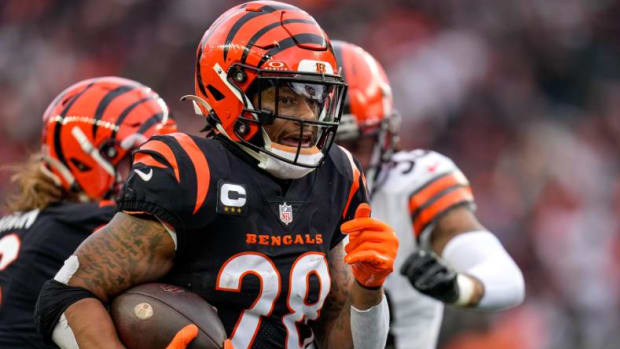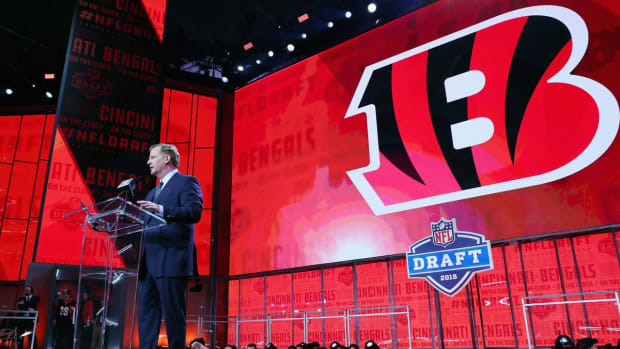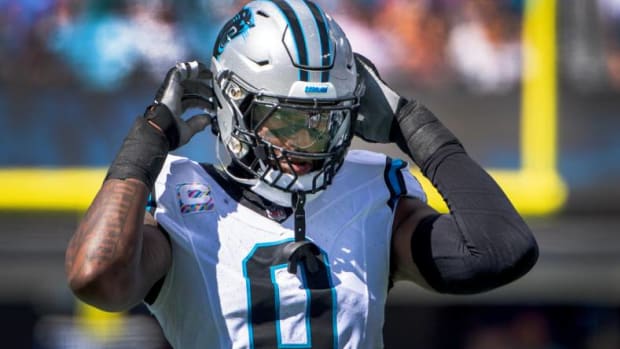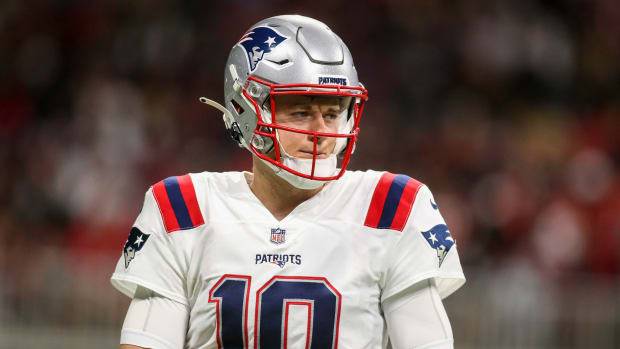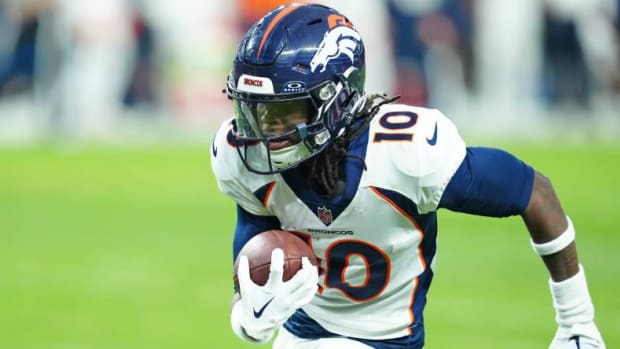2020 NFL Draft Grades – Buffalo Bills
Given the months and months of build-up to the annual NFL draft, the rush to summarize a team’s rookie draft class in a few sentences and stamp a letter grade on it has never quite made much sense to me.
In the past, I’ve compared this process to patrons at a restaurant complimenting (or complaining to) the chef based on the menu, rather than waiting to actually taste the food.
In much this same way, it obviously takes time to properly evaluate a draft. Given all of the complexities of the 2020 NFL draft, specifically, this is especially true.
So, while we cannot skip years ahead to know for certain which players will ultimately exceed or fail to live up to expectations in the NFL, we can provide a much deeper dive into each team’s rookie class.
Therefore, in a 32-part series, NFLDraftScout.com will be providing a detailed breakdown of each of the NFL teams’ rookie hauls, following the original draft order. Each team will be evaluated on the quality, quantity and relative safety of their draft classes (including undrafted free agents), with specific players recognized as Best Player, Best Value and Best Project, culminating in one “final” grade.
Today’s team: Buffalo Bills
Head Coach: Sean McDermott
General Manager: Brandon Beane
Players selected in 2020:
Round 2, Pick 54 overall: DE A.J. Epenesa, Iowa
Round 3, Pick 86 overall: RB Zack Moss, Utah
Round 4, Pick 128 overall: WR Gabriel Davis, Central Florida
Round 5, Pick 167 overall: QB Jake Fromm, Georgia
Round 6, Pick 188 overall: K Tyler Bass, Georgia Southern
Round 6, Pick 207 overall: WR Isaiah Hodgins, Oregon State
Round 7, Pick 239 overall: CB Dane Jackson, Pittsburgh
Key Undrafted Free Agents:
OT Trey Adams, Washington
S Garrett Taylor, Penn State
OL Marquel Harrell, Auburn
RB Antonio Williams, North Carolina
CB Ike Brown, Florida International
Overview of the Bills’ 2020 draft: Given that the Bills shipped three 2020 draft picks (first, fifth and sixth rounders) to Minnesota for veteran wideout Stefon Diggs a month before the proceedings began, GM Brandon Beane deserves a lot of credit for the rookie draft class, nevertheless, brought in to Buffalo. In Diggs, Beane awarded young rifle-armed quarterback Josh Allen one of the NFL’s preeminent vertical threats, a sublime fit in Buffalo’s heavy run and play-action offense. The Bills doubled-down on this transaction by selecting Central Florida’s Gabriel Davis and Oregon State’s Isaiah Hodgins, two ultra-reliable split ends with the size and physicality missing from the rest of Buffalo’s receiver corps. While splashy pass-catchers will likely dominate offseason conversations on Buffalo across the country, true Bills fans know that this team, in particular, is a blue collar unit in the mold of head coach Sean McDermott, which is why the selections of the rugged and ready-to-rock A.J. Epenesa and Zack Moss to start off the draft should have surprised no one. While perhaps lacking the elite athletic traits to turn heads during workouts, both were consistent multi-year stars for highly respected programs which faced top competition, ranking as two of the “safest” prospects in this class at their respective positions. If there were surprises in Buffalo’s draft, they came on Day Three with the selections of quarterback Jake Fromm and kicker Tyler Bass, despite proven commodities already on the roster. While the polar opposite of Allen from a size and arm perspective, Fromm was viewed by some as this year’s top “backup quarterback prospect” because of his savvy, projecting as a player-coach in some clubs’ eyes. That kind of perspective is highly valued by teams, especially those with an undeniably talented, but still-willow-wild starter like Allen. Picking Bass is a strong wake-up to incumbent starting kicker, who is due $6.5 million over the next two seasons. Don’t sleep on seventh round pick Dane Jackson, either. He struggled a bit at the Senior Bowl but his tenacious playing style the past three seasons starting at Pitt was no mirage.
Best Player of the Bills’ 2020 Draft: DE A.J. Epenesa
Full disclosure, I am a lot higher on Epenesa than many seem to be, just as I was with Shaq Lawson, the former Bills’ standout and free agent defection to Miami who the rookie from Iowa was essentially drafted to replace. Like Lawson, the still-growing 6-5, 275 pound Epenesa is more full-time defensive end than one-trick pony pass rushers so popular in today’s NFL, which is why the former five-star recruit and AP All-American slid 22 picks out of the first round. Any chance of Epenesa hearing his name called in the first round probably ended in the 5.04 seconds it took him to finish the 40-yard dash at the Combine. This timed test is an important evaluative tool but should never replace game tape, which is where Epenesa stands tall against every other rusher in this class, with the exception of Chase Young, the best player in the 2020 class. While lacking the explosive burst scouts would prefer, Epenesa consistently gets a jump on opponents because of his snap anticipation and use of clever outside-in counters and hand-feet cohesion. In simple terms, Epenesa is a technician, but his length (34.5” arms) and heavy hands reinforce his pro-ready tool box. Epenesa is not likely to challenge veterans Jerry Hughes or free agent acquisition Mario Addison as the Bills’ leading pass rusher in 2020. Carving out time at all as a rookie will be difficult, as Buffalo quietly has assembled one of the league’s better rosters, including along the defensive line. Be patient Bills’ fans, like Lawson (who got $30 million for three years from the Dolphins), Epenesa’s talent will be proven over time, with more suitors lining up for his second NFL contract than his first.
Best Value of the Bills’ 2020 Draft: RB Zack Moss
While Epenesa is a stylistic clone of Lawson, Bills fans could initially see shades of Frank Gore with how Buffalo seeks to use Moss as a “Thunder” complement to the lightning offered by last year’s third round pick Devin Singletary and veteran T.J. Yeldon. Moss, however, is much more like the equally physical and nimble Gore, who joined the league as a third round pick by the San Francisco 49ers, than the slowing-down-but-still-running Sherman tank he’s become after 15 years of NFL punishment. At their peak, both backs offer a unique combination of elusiveness and power that leaves would-be tacklers on their heels, allowing the backs to play faster than either of them tested in workouts. Gore, it is worth remembering, was clocked at 4.58 seconds in the 40-yard dash at 5-09, 217 pounds at his University of Miami Pro Day after not running at the Combine. Critics were quick to jump on Moss (5-09, 223) after he was timed at 4.72 and 4.65 in two attempts at the 40-yard dash in Indianapolis this year and the COVID-19 lockdown kept news about his significantly better Pro Day workouts relatively quiet – at least from a national perspective. Like Epenesa, Moss’ game tape is just too good to get sidetracked by poor tests. It was Moss, after all, not Oregon quarterback Justin Herbert or the three receivers (Brandon Aiyuk, Michael Pittman, Jr. or Laviska Shenault, Jr.) who earned Top 50 picks in the 2020 NFL draft who was rightly voted the Pac-12’s Offensive Player of the Year this past season. Better yet, like Gore, Moss is no one-year wonder, leaving Utah as the school’s all-time leader in rushing yards (4,067) and touchdowns (38), averaging a healthy 5.7 yards per rush as a four-year starter.
Best Project of the Bills’ 2020 Draft: WR Gabriel Davis
Beane deserves credit for giving McDermott and his staff a rookie class of prospects who are relatively ready for the NFL, many of them physically and mentally mature as multi-year producers for college teams running pro-style concepts. Davis, who started every game the past three years for UCF, is among them, hauling in 152 passes for 2,447 yards and 21 touchdowns during that time. During that time, however, Davis was asked to play a relative simple (but highly effective) role as a jump-ball specialist on the perimeter, using his well-built 6-2, 216 pound frame to bully opponents and come down with contested passes. Given the straight-line speed on the roster with Diggs (and John Brown) with savvy slot specialist Cole Beasley (and Andre Roberts), Buffalo had a clear need for a physical split end. Davis is not the accomplished do-it-all route-runner yet that helped 17 other receivers get drafted before him, but don’t be surprised if he becomes one of the most productive, especially when it comes to catching touchdowns.
Overall Grade for the Bills’ 2020 Draft: A-
Previous 2020 NFL Draft Report Cards: Cincinnati Bengals |Washington Redskins | Detroit Lions | New York Giants | Miami Dolphins | Los Angeles Chargers | Carolina Panthers | Arizona Cardinals | Jacksonville Jaguars | Cleveland Browns | New York Jets | Las Vegas Raiders | Indianapolis Colts | Tampa Bay Buccaneers | Denver Broncos | Atlanta Falcons | Dallas Cowboys | Pittsburgh Steelers | Chicago Bears | Los Angeles Rams | Philadelphia Eagles | Buffalo Bills | New England Patriots | New Orleans Saints | Houston Texans | Minnesota Vikings | Seattle Seahawks | Baltimore Ravens | Green Bay Packers | Tennessee Titans | San Francisco 49ers | Kansas City Chiefs
